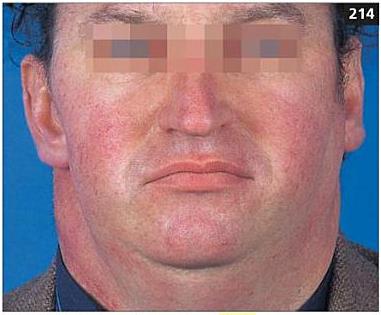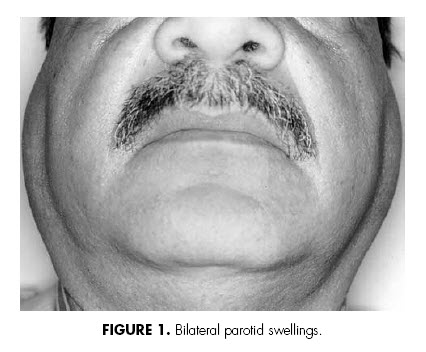Sialosis / Sialadenosis
What is it?
Sialadenosis; is a non-specific term used to describe an uncommon, benign, non-inflammatory, non-neoplastic enlargement of a salivary gland, usually the Parotid Gland but occasionally affects the Submandibular Glands and rarely, the Minor Salivary Glands.
This enlargement is bilateral, symmetrical and painless (it is often painless but not invariably so).
In general, the enlargement is asymptomatic and the cause is idiopathic.
In this disorder, both parotid glands may be diffusely enlarged with only modest symptoms.
Patients are aged 30 – 69 years at onset and the sexes are equally involved. The glands are soft and non-tender.
Causes:
Several causes have been recorded, most of which are associated with (mal-) nutrition, metabolism or drugs and have a unifying feature in autonomic neuropathy.
Changes in salivary aquaporin water channels may also be involved.
Drugs
- Among the wide range of drugs that may induce sialosis, anti-hypertensive agents are prominent.
- Alcohol abuse ± liver cirrhosis + hepatic steatosis and alcoholic hepatitis. (Previous reports have indicated that between 30% and 80% of patients with alcoholic cirrhosis have sialosis but, if that were universally true, one would expect sialosis to be seen more often than it is)
- Sympathomimetics such as isoprenaline
- Phenylbutazone
- Anti-thyroids & phenothiazines
Endocrine (Hormonal)
- Diabetes Mellitus (reported prevalence of sialosis in diabetes ranging from 10% to 80%)
- Pregnancy
- Acromegaly
- Following oophorectomy
Nutritional Disorders
- Any disorder that affects the digestion of food or its absorption over a prolonged period, can result in sialosis, and malnutrition may contribute to sialosis in alcoholics.
- Malnutrition – pellagra or kwashiorkor
- Cystic Fibrosis & pancreatitis
- Anorexia Nervosa
- Bulimia
Multiple emetic episodes (bulimia) cause an autonomic neuropathy. With sympathetic nerve impairment, individual acinar cells enlarge because of zymogen granule engorgement.
One explanation is that the sympathetic nerve supply to the secreting acinar cell is concerned with the production and secretion of zymogen, the precursor of amylase. Because of sympathetic nerve dysfunction, there may be an increase in zymogen storage in the cell, owing to increased production, decreased secretion of the granules or both. The ensuing cellular enlargement, which is evidenced by fine-needle aspiration biopsy and electron microscopy, leads to the clinically visible gland enlargement.
Clinical Findings:
Soft, painless, general enlargement of both parotids.
Investigations & Imaging:
Blood Tests:
glucose levels
Abnormal liver function tests
Sialochemistry:
potassium levels
calcium levels
Ultrasound, MRI & Sialography:
Helps differentiate space occupying lesions
Biopsy:
Rarely indicated. If done, the biopsy shows the acinar cells to be enlarged to almost twice the normal diameter and the cytoplasm packed with enzyme granules.
Treatment:
None necessary.
Sialosis may resolve if diabetes mellitus- & alcoholism-related sialosis is treated
If the glands are disfiguring, superficial parotidectomy to improve the appearance could be considered (though seems a bit radical).
By the same token, anorexic or bulimic patients may attend seeking advice about surgical removal of the glands. The anorexia or bulimia would need to be treated before any such surgery could be contemplated.
Useful Articles & Websites
BSOM Patient Information Sheet. Sialosis
J Am Dent Assoc 1997. Alcoholic parotid sialadenosis
J Oral Maxillofac Surg 2002. Sialadenosis Associated With Diabetes Mellitus – A Case Report
J Am Dent Assoc 2004. Case report. Diagnosing bulimia nervosa with parotid gland swelling
J Oral Maxillofac Surg 2005. Alcoholic (Beer) Sialosis
BJOMS 2008. Sialosis – 35 cases of persistent parotid swelling from two countries



